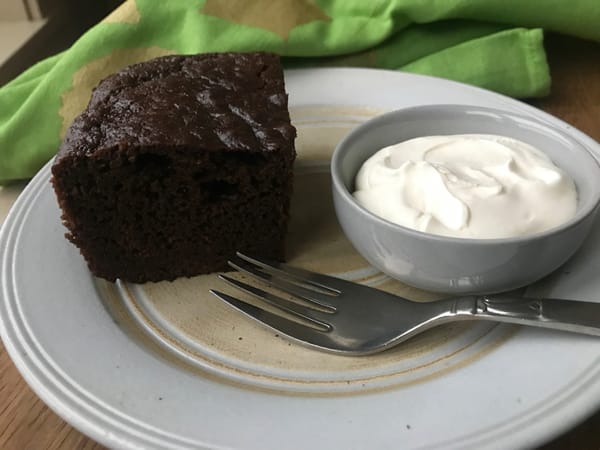Recipe: Gingerbread
This warm, spicy cake tastes like someone being nice to you, says Janet Elsbach.

This warm, spicy cake tastes like someone being nice to you, says Janet Elsbach.

The world is quite full, at the moment, of gingerbread people and houses and ornaments. Many of these things are quite beautiful to look at, but I don’t find them delicious to eat. If you want me to sit up and take notice at the mention of gingerbread, you'd better be talking about the kind that comes in cake form, not the kind that you roll out the cookie cutters for.
It’s a challenge to think and write about (let alone eat) this type of gingerbread and not use the word “moist,” which all of science (including People magazine) has declared to be one of the most detested words in the English language. I’m going to try to have that reference be the only place that word appears here but it won’t be easy. This cake is not dry.
Whether the holiday census under your roof is in the single or double digits, there is bound to be someone made happy by warm, spicy cake that mixes up in a few minutes and perfumes the entire house. The cake is enriched by plenty of nourishing molasses (rich in minerals) and pumpkin, and both of these ingredients help the cake stay fresh for days. It’s a comforting dessert that passes as a reasonable breakfast and it smells and tastes like someone being nice to you.
If you are called upon to be nice to people with various dietary limitations, please note the following: the flour called for here is einkorn, an ancient variety of wheat that has never been hybridized or otherwise tinkered with. It’s higher in protein than what passes for conventional wheat these days, and for various reasons is generally tolerable by people with non-celiac gluten sensitivity. You can substitute an equal amount of either all-purpose wheat flour or a cup-for-cup variety of gluten-free flour if you like. Another variation to note is that this bakes up very successfully without an egg; the cake will be a little denser without the leavening action it provides, but still quite delicious. If you choose to go that route, simply add the flax meal to your wet ingredients instead of the dry. Finally, I’ve made this with coconut milk and cow’s milk; both work beautifully, in case your target audience is avoiding dairy.
If they are not dairy-averse, the lily-gilding of my friend Peggy’s perfect whipped cream is a pretty welcome fillip, and I will warn you it’s hard to go back to regular after you’ve tried it.
Gingerbread
1 cup milk (I used coconut, from a well-shaken can)
¾ cup pure pumpkin puree
½ cup molasses
¼ cup neutral vegetable oil
2 tablespoons cider vinegar
1 egg (optional; see note)
2 cups einkorn flour (see note)
1 cup granulated sugar
1 tablespoon ground cinnamon
1 tablespoon ground ginger
2 teaspoons baking soda, sifted
¼ teaspoon freshly-ground black pepper
½ teaspoon sea salt
¼ cup flax meal (if baking egg-freesee note)
To serve:
1 half pint heavy cream
8 ounces crème fraiche
1 tablespoon maple syrup
Heat the oven to 350 degrees, and lightly grease a 9” baking pan.
In a small bowl, whisk together the wet ingredients and allow them to stand at least five minutes.
In a large bowl, whisk together all the dry ingredients, making sure there are no lumps.
Pour the liquid ingredients into the dry and combine until no dry streaks remain. Scrape into the prepared pan and lightly smooth the top. Bake 35-40 minutes, until a tester in the center comes out clean. The center of the cake may not rise and crown, but this is just fine as long as it has set.
Allow the cake to cool as long as is practical. It’s delicious warm, and will also keep, covered, for a few days at room temperature.
For the topping, whisk the cream, crème fraiche and maple syrup together until soft peaks form, and chill until serving time.